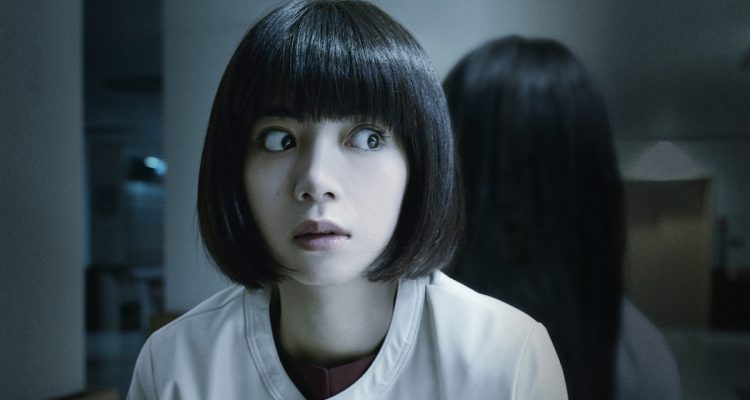A woman with long, jet-black hair covering her face drags herself out of a well. Limbs bent at impossible angles, the sinister figures crawls forward, emerging through a television screen. It is this image that has driven the “Ring” franchise since Hideo Nakata’s original effort debuted in Japan in 1998. The following year, “Ring” made its North American debut at Montreal’s then-young Fantasia Film Festival. History repeats itself twenty years later as the latest entry “Sadako” makes its North American Premiere as the opening film for Fantasia’s 2019 edition. It’s a promising sign that director Nakata returns to the series that built his name, but the veteran J-horror hand lacks the auteur chops to reinvigorate the franchise. The result is a listless affair where the iconic Japanese movie monster has become indistinguishable from her tedious imitators.
For this go-around, the raven-haired J-horror icon resurfaces in the form of a young girl (Himeka Himejima)—thought to be the reincarnation of Sadako by her mother, who attempts to burn her deviant daughter alive. Found wandering the streets of Tokyo, the now-orphan is brought to a hospital and placed under the care of psychologist Mayu Akikawa (Elaiza Ikeda). The doctor is doubly ensnared by the curse when her brother, a struggling vlogger selling himself as the “Fantastic” Kazuma (Hiroya Shimizu), disappears after entering the burned-out apartment in pursuit of some on-trend haunted house clicks. Once again, Mayu’s only hope for saving Kazuma—and her young charge—is to chase down the origins of Sadako.
This ghost’s power is rooted in imagery, literally, as she traditionally claims her victims seven days after they’ve watched a cursed tape. The recording itself, a series of eerie, beguiling images, becomes a trail of breadcrumbs for the principal characters, and the spectator, to follow. In the years since “Ring,” Nakata seems to have forgotten this hook, or phoned it in for this installment. “Sadako” is as plain-looking as any recent commercial Japanese movie, much of it taking place in sterile, harshly-lit hospital interiors. Sepia flashbacks to Sadako’s youth—approached in the same style as the original, if not excerpts—serve as a reminder that the director has, and can, bring atmosphere to the horror genre. A case could be made some early dusk scenes, the yellow tint lending a grim, apocalyptic ambiance to the megalopolis’ deserted streets.
“Sadako” takes the baffling tactic of both assuming its audience’s familiarity with keystones of the “Ring” mythology—not all elements of which carry over into the American entries, like psychic powers—while also not placing a great deal of significance on these recurring elements. It’s a neither-here-nor-there approach that makes the film inaccessible to neophytes and unsatisfying to J-horror diehards. There’s no tape to speak of, with the Sadako choosing her victims by proximity instead of haunted chain letters—an essential detail that this entry, to its detriment, dispenses with. On only one occasion does she perform her notorious finishing move, and unsurprisingly it’s the only instance that “Sadako” manages to quicken the blood.
Performances, like the cinematography, are more or less stuck in neutral and are in keeping with the style of popular Japanese cinema. Unlike the admirably strong mother figures in “Ring” and Gore Verbinski’s American remake “The Ring” (a star-making role for Naomi Watts), none of the leads are worth following to a possible sequel. Ikeda’s protagonist forges a connection with the orphaned girl via a shared maternal absence, but these details are communicated through exposition rather than any discernible performative nuance. Other tech elements are forgettable. The score occasionally grasps at John Carpenter notes, lending Sadako a Michael Myers-like dread—it’s an interesting tone, though largely incongruent with an otherwise J-horror vibe and far from Hans Zimmer’s memorable themes for “The Ring.”
To its credit, “Sadako” does well to capture the attention span of virality; cursed images don’t spread across the Internet like an apocalypse, but are rather quickly forgotten as the next craze comes along. Not that the central characters are in any way interesting or dynamic, but Nakata is able to narrow his focus to his protagonists and their personal stakes instead of exploring tired metaphors. What’s unfortunate is that the film itself has even less staying power than Fantastic Kazuma’s videos, too. Revisit the vastly superior original, or deliciously wacky 2016 entry “Sadako vs. Kayako”—a “Ring”/“The Grudge” mashup that’s far better than it ought to be—instead. [D+]

